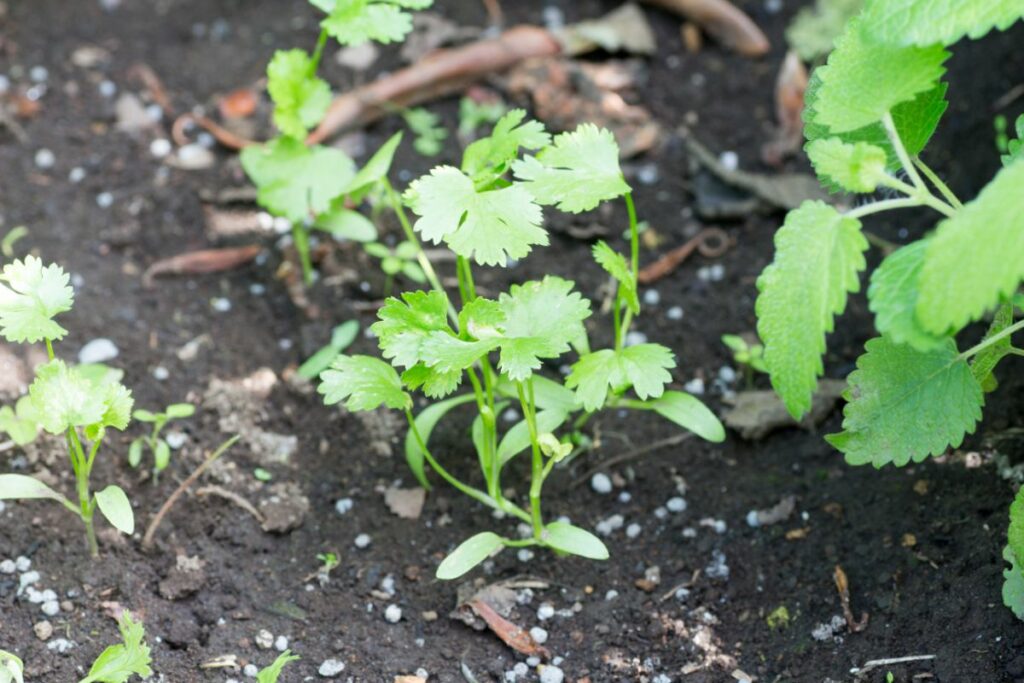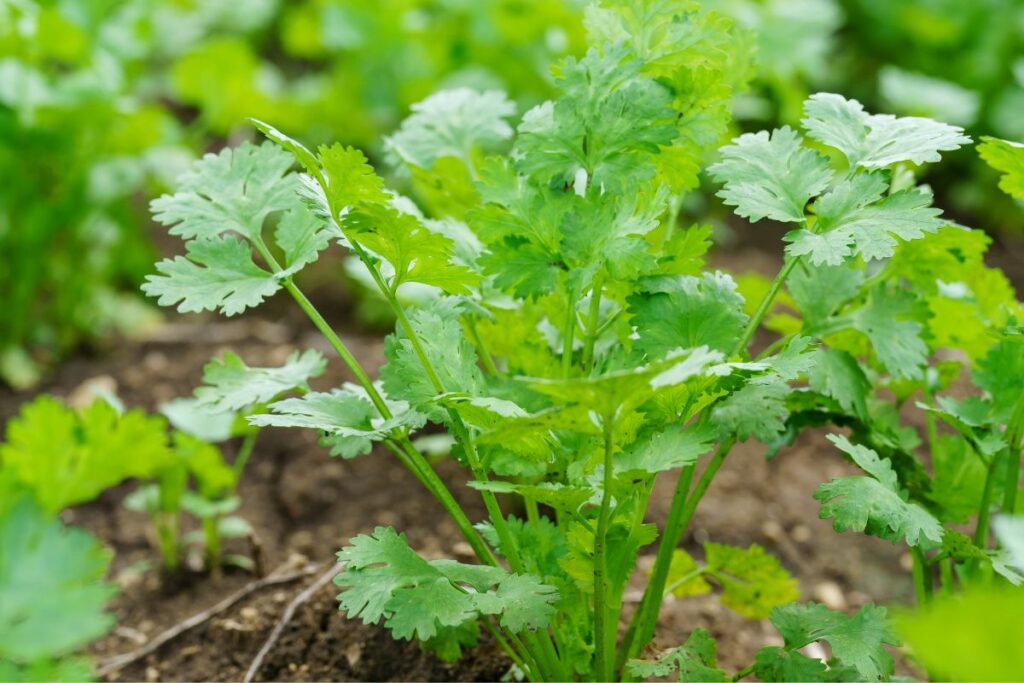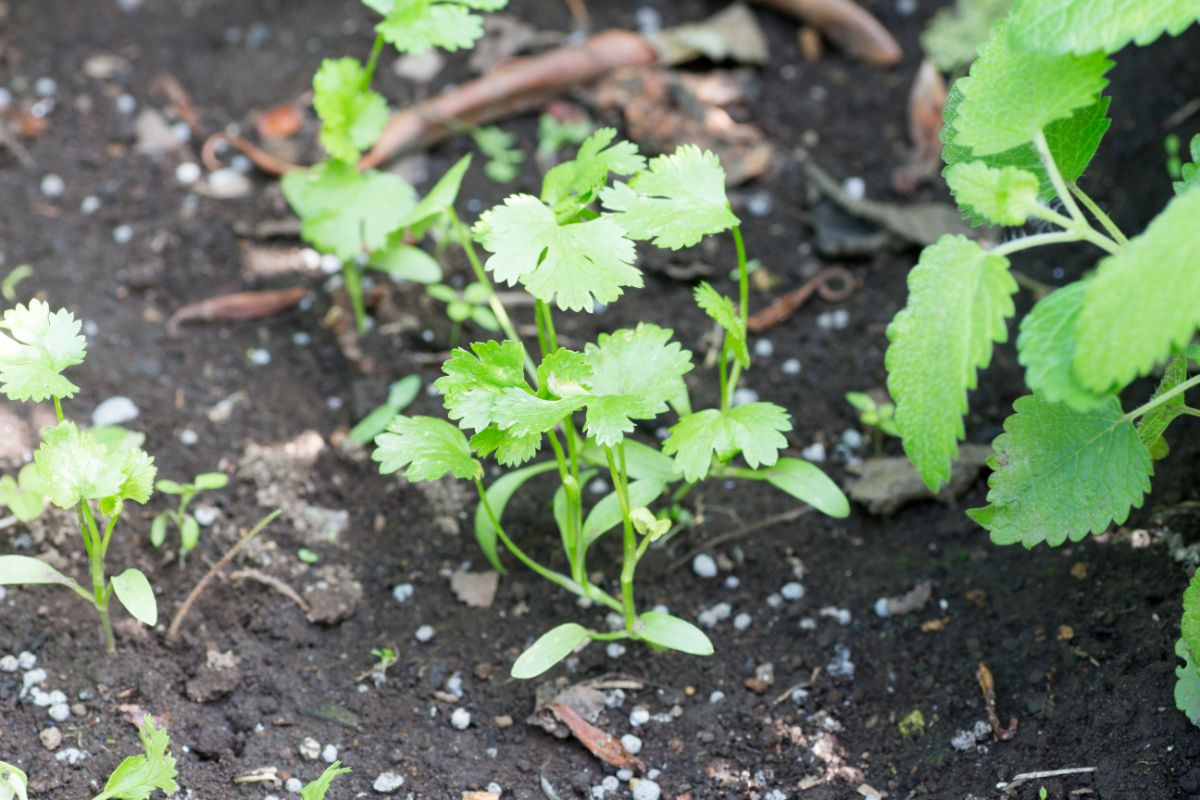Cilantro, the vibrant and aromatic herb, is a staple in kitchens around the world.
Known for its fresh, citrusy flavour and its ability to elevate a variety of dishes, growing cilantro outdoors is a rewarding endeavour that can make your culinary adventures even more exciting.

It doesn’t matter if you’re a seasoned gardener or a green-thumbed newbie; this easy guide on growing cilantro outdoors will walk you through the process, offering tips and tricks along the way.
Why Grow Cilantro?
Before we take a look at the nitty-gritty of growing cilantro, let’s take a moment to appreciate the herb and understand why it’s worth the effort.
Cilantro, also known as coriander in some parts of the parts of the world, is not only delicious but also highly nutritious.
It’s rich in vitamins, minerals, and antioxidants, making it a valuable addition to your diet. Plus, it’s a versatile herb that complements a wide range of dishes, from salsas and curries to salads and soups.
Beyond its culinary value, cilantro can also be used for its medicinal properties. It has been used in traditional medicine to aid digestion, reduce inflammation, and even as a natural breath freshener.
By growing cilantro outdoors, you’ll have a fresh and accessible supply right at your fingertips.
Selecting The Perfect Location To Grow Your Cilantro Outdoors
Cilantro is a sun-loving herb, but it can be a bit fussy about its growing conditions. To ensure a thriving cilantro patch, you need to choose the right location in your outdoor space.
Look for a spot that receives at least 4-6 hours of sunlight each day but provides some shade during the hottest part of the day.
This balance of sun and shade helps prevent the herb from bolting prematurely, which can be a common challenge when growing cilantro.
In terms of soil, cilantro prefers well-draining, loamy soil that’s rich in organic matter. Before planting, work compost or well-rotted manure into the soil to improve its texture and fertility.
Cilantro can be a bit sensitive to soil pH, so aim for a slightly acidic to neutral pH level, ideally around 6.5.
Starting Cilantro From Seeds
Cilantro is typically grown from seeds rather than transplants, as it has a long taproot that doesn’t transplant well. The food news is that cilantro seeds are readily available and relatively inexpensive.
When it comes to planting cilantro seeds, timing is crucial. You can sow seeds in the early spring or fall, as cilantro prefers cooler weather.
Here’s How To Sow Cilantro Seeds
- Prepare the soil by loosening it with a garden form and removing any rocks or debris.
- Sprinkle cilantro seeds evenly over the prepared soil. Aim for about ¼ inch depth when sowing the seeds. Space them about 2-3 inches apart to give the plants room to grow.
- Gently cover the seeds with a thin layer of soil and press down lightly.
- Water the area thoroughly, ensuring that the soil stays consistently moist until the seeds germinate.
- As the seedlings grow, thin them out to 6-8 inches apart to prevent overcrowding.
Caring For Your Cilantro
Caring for cilantro is relatively simple as long as you stay on top of a few key factors. Let’s look at the essentials:
Watering
Cilantro prefers consistently moist soil. Water your plants when the top inch of soil feels dry to the touch, but be mindful not to overwater, as cilantro doesn’t like to sit in waterlogged soil.
Fertilising
Feed your cilantro every 2-3 weeks with a balanced, all-purpose fertilizer. Alternatively, you can use a slow-release granular fertilizer to provide a steady supply of nutrients throughout the growing season.
Mulching
Apply a layer of mulch around your cilantro plants to help retain soil moisture and prevent weed growth. Mulch also keeps the soil temperature more consistent, which cilantro appreciates.
Pruning
To encourage bushier growth, regularly pinch off the upper leaves of your cilantro plants. This will also prevent the plants from bolting too quickly.
Preventing Bolting
Cilantro is notorious for bolting, which means it starts to produce flowers and seeds prematurely. This process can cause the leaves to become less flavorful and eventually lead to the plant’s demise.
To prevent bolting and prolong your cilantro harvest, try these strategies:
- Provide Adequate Shade: As mentioned earlier, cilantro prefers some shade during the hottest part of the day. You can use taller plants or a shade cloth to achieve this.
- Succession Planting: Instead of planting all your cilantro seeds at once, sow a few every few weeks. This way, you’ll have a continuous supply of fresh leaves throughout the growing season.
- Keep The Soil Cool: Mulch and regular watering help maintain a cooler soil temperature, which can delay bolting.

Storing Cilantro
Fresh cilantro has a limited shelf life, so it’s essential to store it properly to make the most of your harvest. Here are a few storage options:
Refrigeration
Place freshly harvested cilantro in a glass of water and cover it with a plastic bag or wrap. Store it in the refrigerator. Change the water every few days to keep it fresh for up to two weeks.
Freezing
If you have a bumper crop of cilantro, you can freeze it for later use. Chop the leaves and store them in an airtight container in the freezer.
Drying
Drying cilantro is another option. Simply hang the stems upside down in a cool, dry place until they’re dehydrated. Then, remove the leaves and store them in an airtight container.
Final Thoughts
Growing cilantro outdoors is a gratifying experience that allows you to savour the delicious, vibrant herb right in your garden.
With the right location, proper care, and a few strategies to prevent bolting, you can enjoy a continuous supply of fresh cilantro throughout the growing season.
So roll up your sleeves, grab some seeds, and get ready to add a burst of flavour to your favourite dishes with homegrown cilantro. Happy gardening!
Frequently Asked Questions
The ideal time to plant cilantro outdoors is in the early spring or fall. Cilantro prefers cooler temperatures, so avoid planting it during the hottest part of summer.
While it is possible to grow cilantro from store-bought stems with roots, starting from seeds is generally more successful, as cilantro has a long tap root that doesn’t transplant well.
- Can You Grow Bell Peppers Indoors? A Guide For New Gardeners - November 14, 2023
- Composting Basics: Can You Compost Mushrooms? - November 6, 2023
- A Gardener’s Guide To Growing Carrots In Raised Beds - November 1, 2023




